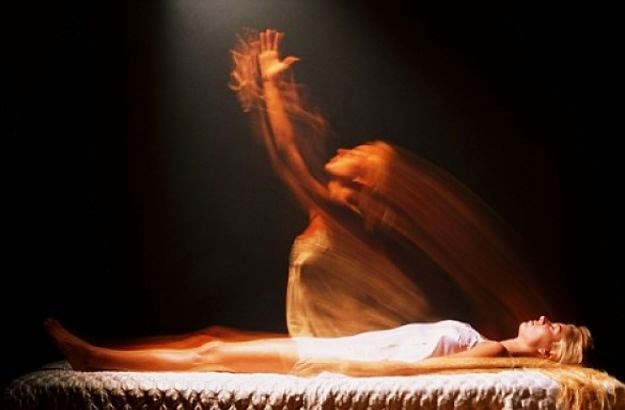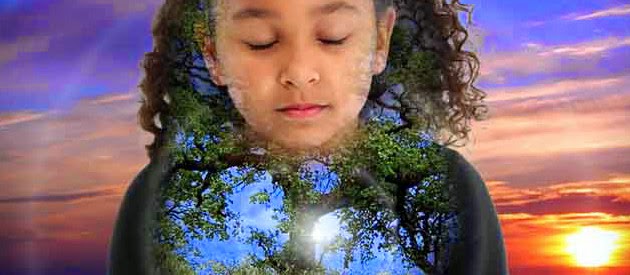By Steven Bancarz,
A lot of people are resistant to the idea of a “soul” because of how this term has gotten wrapped up in religious superstition and dogma. Some people think it is outright silly. But the concept of consciousness being able to detach from the body offers a lot of explanatory power when it comes to phenomenon such as Near Death Experiences, Out-Of-Body Experiences, astral projections, and even reincarnation. In fact, the evidence for reincarnation is the best hard scientific evidence we have for the existence of a soul. This is a bold claim, but the evidence for reincarnation is undeniable and cannot collectively be attributed to chance or any other physical explanation. If reincarnation exists, the soul exists. Let’s take a look!
Before we explore the evidence, it’s helpful to remember that we do not need hard PROOF in order to be justified in believing in something. If the weatherman says there is a 70% chance of showers, I don’t need proof that it’s going to rain before I am justified in bringing an umbrella with me. I don’t have to be certain that a meteor isn’t going to fall on my head before I go outside. I don’t need hard scientific proof of extra-terrestrial life in order to be justified in believing that life exists on other planets, because there are so many good reasons that, when taken together cumulatively, provide a plausible account for belief in life on other planets. This is known as “abductive reasoning” and is the kind of reasoning we use most in our every day lives.
Reincarnation is not something you can objectively measure in the same way you can measure a chemical reaction, so it may even be in principle non-provable using the scientific method. Science is the empirical measurement of the natural world, and the soul is something which would exist beyond the natural world. So the question is, “Are there enough solid pieces of evidence that, when taken together, provide a plausible account for reincarnation?” I think the answer is a resounding yes. Here we go:
Dr. Ian Stevenson, Ph.D., former Professor of Psychiatry at the University of Virginia School of Medicine, spent 40 years researching reincarnation stories within children. This former chairman of the Department of Psychiatry and Neurology investigated over 3000 independent stories of children who claimed to have memories and know people from their alleged past lives. According to Stevenson, the number of cases that are worth considering is so high that it exceeds the ability of him and his team to investigate them all.
Facial recognition software confirmed that there was in fact a facial resemblance to their alleged prior incarnation. Some had birth marks on places where they allegedly suffered fatal wounds from in their past life. They were often dramatic and sometimes bizarre lesions, such as malformed digits or missing limbs, misshapen heads, and odd markings. As Dr. Stevenson writes in his paper “Birthmarks and Birth Defects Corresponding to Wounds on Deceased Persons” in the peer-reviewed Journal of Scientific Exploration:
“About 35% of children who claim to remember previous lives have birthmarks and/or birth defects that they (or adult informants) attribute to wounds on a person whose life the child remembers. The cases of 210 such children have been investigated. The birthmarks were usually areas of hairless, puckered skin; some were areas of little or no pigmentation (hypopigmented macules); others were areas of increased pigmentation (hyperpigmented nevi).
The birth defects were nearly always of rare types. In cases in which a deceased person was identified the details of whose life unmistakably matched the child’s statements, a close correspondence was nearly always found between the birthmarks and/or birth defects on the child and the wounds on the deceased person. In 43 of 49 cases in which a medical document (usually a postmortem report) was obtained, it confirmed the correspondence between wounds and birthmarks (or birth defects).”
The memories the children recalled were far too specific to be chalked up to chance. In an article where 3 cases were looked at in great detail by Dr. Stevenson, he reported that each of the 3 children made roughly 30-40 claims regarding memories that had of their past lives, 82-92% of which were both verifiable and correct. The particularities and specific details that were given by the children ranged from anything from the names, personalities, and occupations of their former parents and siblings to the precise layouts of the houses they lived in. It was not uncommon for Stevenson to encounter a child who could go into a town he had never been in before and give him the details of the village, former personal belongings, the neighbourhood in which he lived in a past life, and the people who he use to associate with.
As he concludes: “It was possible in each case to find a family that had lost a member whose life corresponded to the subject’s statements. The statements of the subject, taken as a group, were sufficiently specific so that they could not have corresponded to the life of any other person. We believe we have excluded normal transmission of the correct information to the subjects and that they obtained the correct information they showed about the concerned deceased person by some paranormal process.”
Something which interested Dr. Stevenson was the phobias that were developed from past-life traumas. As Dr. Jim Tucker writes:
“Another area that interested Ian was the behavior of these children. He wrote a paper about phobias that many of the children showed, usually related to the mode of death from the life they claimed to remember (Stevenson, 1990a). He reported that 36% of the children in a series of 387 cases showed such fears. They occurred when the children were very young, sometimes before they had made their claims about the previous life. For example, he described a girl in Sri Lanka who as a baby resisted baths so much that three adults had to hold her down to give her one. By the age of six months, she also showed a marked phobia of buses and then later described the life of a girl in another village who had been walking along a narrow road between flooded paddy fields when she stepped back to avoid a bus going by, fell into the flood water, and drowned.” The original journal article these findings were published can be found here.
What seems to be more than mere chance is that children were able to accurately identify former acquaintances and relationships they had with people in their prior lives. Most impressively was a Lebanese girl who was able to remember and identify 25 different people from her past life and the interpersonal relationships she had with them. His best findings were put together in a book called Twenty Cases Suggestive of Reincarnation. For further reading, this book would really be your best bet. The American Journal of Psychiatry reviewed these cases and said there were ‘‘cases recorded in such full detail as to persuade the open mind that reincarnation is a tenable hypothesis to explain them’’. He had several other books and papers published and widely accepted in the mainstream community.
As a review in the Journal of the American Medical Association stated ‘‘In regard to reincarnation he has painstakingly and unemotionally collected a detailed series of cases from India, cases in which the evidence is difficult to explain on any other grounds.’’ The reviewer added: ‘‘He has placed on record a large amount of data that cannot be ignored’’. His one paper called ‘‘The Explanatory Value of the Idea of Reincarnation’’ had thousands of requests for reprints by scientists all over the world. His findings were also published in peer reviewed journals the Journal of Nervous and Mental Disease, and the International Journal of Comparative Sociology.
During a presentation at Penn State University in 2005, Dr. Jim B. Tucker, a child psychiatrist at the University of Virginia, described how a mother was leaning over the changing table to change her son’s diaper. Her young toddler unexpectedly said, “When I was your age, I used to change your diapers.” Sam Taylor, of Vermont, was born 18 months following his grandfather’s death. When he made this comment, he was only a few years old. When he was four and a half years old, however, Taylor was able to pick out his grandfather from a class picture of about 20 people and identify his grandfather’s first car from a photograph.
Here is video of a young boys reincarnation story covered by ABC news to provide you a glimpse into the nature of these cases. It’s important to note that this case is American, so the parents are not influencing or encouraging the boy to believe in reincarnation in the name of culture or religion:
This is just a small fraction of the amount of evidence that exists for reincarnation. Upon coming to a conclusion about all his findings and his publications, we have to ask ourselves “What is the best explanation that can accommodate all of this evidence?” Why would there be so many cases of children who claim to have been other people, who know the specific names and interpersonal relationships of the person they recall being, who have similar behaviour and personalities as the people they claimed to be, who have birthmarks and abnormalities where they claimed to have suffered wounds in their past lives, and who have specific phobias linked back to alleged past life traumas if reincarnation did not exist? What are the odds of all of this evidence existing without the soul existing? What are the chances that reincarnation does not exist given all of this evidence? The accounts are far too precise to be chalked up as chance, and all other explanations are impoverished in trying to explain such a wide array of data.
Reincarnation can no longer be looked at as some woo-woo, pseudoscientific, religiously dogmatic New Age fantasy, and neither can the soul. We can infer the reality of the soul because it is the best explanation for all of the given data. There must be a non-physical part of us (consciousness itself, perhaps) that contains memories that leaves our body and then enters into a new body. This is a hypothesis which has gotten serious attention in the mainstream academic community, and is still ripe with investigation to this day. When we take all the evidence together and look at it without religious or scientific bias getting in the way, it seems as though we are not only justified in believing in reincarnation, but it also may be the best of all explanations for the strongest cases.
It is not surprising to be born more than once; everything in nature is resurrection” —Voltaire
More evidence for the existence of the soul can be found in the links below:
Harvard trained brain neurosurgeon has the most legitimate NDE ever recorded
Sources:
Sources to original articles can be found in the highlighted words in the article.
Laidlaw, R. W. (1967). Review of Twenty Cases Suggestive of Reincarnation. American Journal of Psychiatry, 124, 128.
King, L. S. (1975). Reincarnation. JAMA, 234, 978
Recommended read: Life Before Life by Dr. Jim Tucker, and Journey of Souls by Dr. Michael Newton.
Author: My name is Steven Bancarz and I am the creator of “Spirit Science and Metaphysics”. Thanks so much for reading this, I hope you enjoyed it!
Spirit Science and Metaphysics












Everybody has the same question … what happens to me after my body dies … EVERYONE. But no one on this planet knows the actual answer to that question … NO ONE. They can tell you what they believe, they can tell you what they have faith in, but none can prove what they say. This is why religion is becoming irrelevant.
What we were before we were we will b e when we are not .
well that depends on what you were before you became what you were to be 😛
That is what I said
Interesting, although im still a bit skeptical. The proof for such a claim is still a bit thin. Can someone show me more scientific proof of this phenomenon?